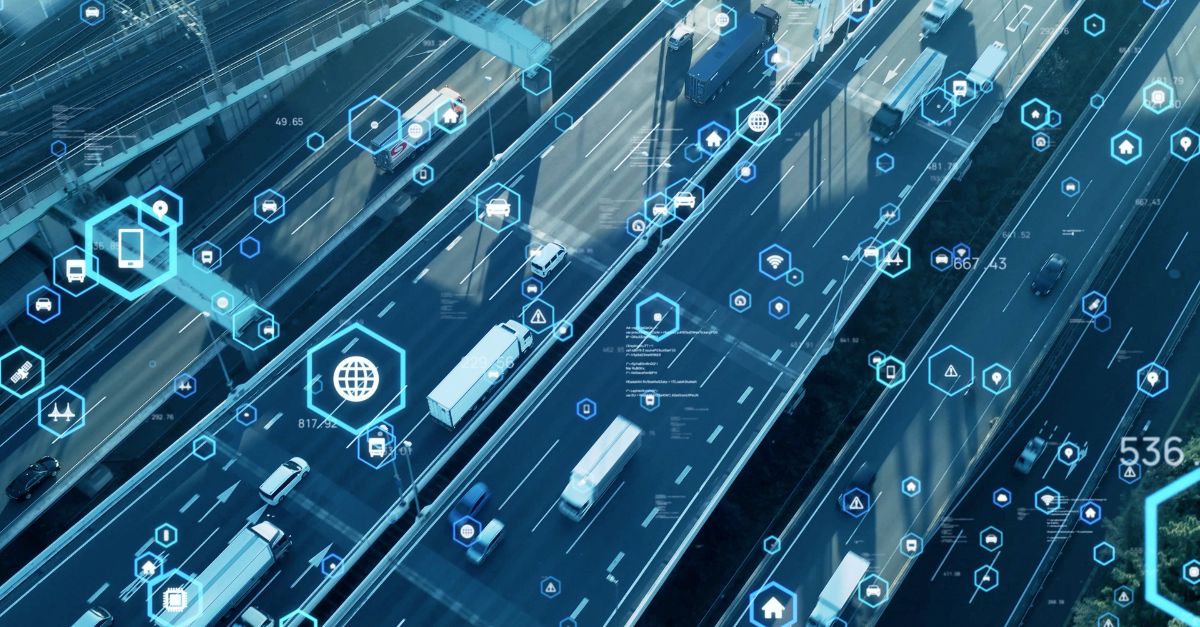In this digital era, everything from home appliances to hi-tech cars, are designed with features that could not have been imagined decades before. Technology has evolved tremendously and is making human lives better and the Internet of Things or IoT is a huge part of this revolution.
The Internet of Things (IoT) is a system of interrelated computing devices, mechanical and digital machines, objects, animals or people that are provided with unique identifiers and the ability to transfer data over a network without requiring human-to-human or human-to-computer interaction.
The world is going full-on digital or, in other words, IoT is having its influence on almost everything. As someone who works in supply chain analytics, I am particularly interested in IoT’s role in logistics. Here is an article that highlights digitalization (IoT) of the processes by the top logistics providers. These logistics providers have separate and dedicated resources who are working with an aim to streamline their visibility and controls whilst making their logistics services as efficient as possible. They do this by focusing on making everything integrated and visible using predictive analytics.
The Role of IoT in Supply Chains and Freight Forwarding
This blog specifically focuses on how IoT has influenced supply chains and specifically, freight forwarding around the globe. Freight forwarding is all about managing freights, import or export, to ensure the product is delivered to the right customer on a specific date in the right condition. It also fall under the scope of cargo packaging, labelling and documentation.
How big is the freight forwarding market? Let me share a fact related to ocean freight. Shipping accounts for 90% of world trade!
EDI or Electronic Data Interchange technology has a vital role in transforming the shape of freight management. EDI has reduced the time taken to manually book and exchange messages between two parties. There are different types of EDI's are being used according to the need of any particular operation which is separately mentioned in an article. This EDI technology, conventional and evolved, is contributing towards making the logistics and freight forwarding industry more efficient than ever before.
Why Logistics Companies Find IoT Appealing?
To answer this question, I would like to highlight some of the major benefits which make IoT technologies appealing to the logistics industry.
For a more efficient supply chain and for accurate and speedy logistics, companies have to have a holistic approach through which they can monitor all the activities in a single interface. IoT and EDI make this possible for logistics companies. Through IoT technologies and EDI devices, flow of information is in real-time and very accurate. Companies can:
- Avoid costs that are related to uncertain production and operational breakdowns,
- Be responsive to bounce back from disruptions and efficiently utilize mitigation policies and
- Save loss of sales and buffer stock, as the network is linked tightly to demand with hi responsiveness.
How Are Logistics Companies Using IoT Concepts?
When it comes to who and how IoT technologies are being used by logistics and freight forwarding companies, there are some big names that comes in my mind.
DHL
DHL Resilience360, an initiative taken by a logistics giant DHL aims to help other manufacturers (big or small) around the world with visibility, tracking and reporting of their supply chain. This initiative provides organizations a platform to visualize, track and protect their business operations smoothly with a detailed and updated view of each and every shipment. An intuitive operational visibility, shipment tracking and their expected time of arrivals to the respective destinations are provided by this initiative.
This will not only give a bigger and better picture of one’s supply chain but will also help to utilize the resources to maximum efficiency.
My main reason for mentioning DHL Resilience 360 is to highlight how they are able to provide this service. It’s all IoT! DHL have an IoT connected satellite, electronic devices, GPS system, DHL global networks and risk management data providers. This has enabled DHL to take freight management to the next level. This initiative is explained further in a DHL Trend Report on the section on IoT’s impact on logistics.
Freightos
I would like to discuss another big start-up, Freightos. This start-up is an international freight marketplace solution for freight comparison of modes of transportation (air, ocean and land), pricing and delivery time. The whole concept and its website are based on SaaS-enabled marketplace model, AcceleRate. The whole mechanism is highly supported and inspired by the concept of IoT, where information is gathered through people, computers and devices and organized in a form where one can have an instant overview of the shipping prices and times from point A to point B.
TCS Hazir
A local private logistics provider in Pakistan, TCS could also be quoted with reference to one of their products “TCS Hazir”. This service allows its user to send a parcel within the city in just 60 minutes. They do this through cellular messages and timely notifications delivered on picking up of the parcel and receiving the parcel. These services are provided with the help of IoT through EDI machines, GPS systems and good visibility of TCS Hazir’s operations.
The Game is Changing
These examples are just a small portion of what is happening the logistics industry today. Big shipping giants like DHL have numerous fleets of ships and they use data to analyze everything from their route planning, capacity planning, consolidations of cargo, transhipments and containerizations. They are able to use a cost-benefit analysis to always have enough goods for the number of orders they make and they can deliver those goods in a timely manner every single time.
IoT does operate “human-free” but it takes a lot of duplication of work and time-consuming activities so it’s recommended that humans and IoT work together on commercial platforms for maximum accuracy!
IoT is a game changer in supply chain efficiency, but there is one thing we should seriously consider in all of this: the security and risk associated with a potential hack on your IoT infrastructure. Every system in your network that is set up to take and share data should be secured in a way that you can trust data coming from it and leaving it is authentic. This should be top of mind when designing your IoT initiatives.
About the Author
Syed Abdul Rehman is supply chain and tech enthusiast. He works as supply chain analyst in the manufacturing industry. He has a passion for IoT, business analytics, artificial intelligence, logistics and supply chain. Abdul is a graduate from the Institute of Business Management, CBM, Pakistan and is currently pursuing a post graduate from the same institute.
Note: This blog article was written by a guest contributor for the purpose of offering a wider variety of content for our readers. The opinions expressed in this guest author article are solely those of the contributor and do not necessarily reflect those of GlobalSign.







